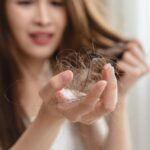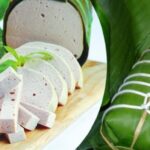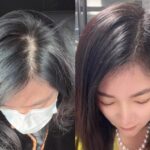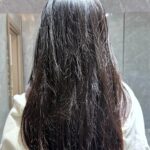
However, both need to be maintained in balance, as too much or too little of either can be detrimental to hair health.
On Moisture: Signs Your Hair is Lacking Moisture

When hair lacks moisture, it’s typically due to a closed or overly expanded cuticle layer. The pores along the cuticle need to open and close with ease; otherwise, hair tends to exhibit signs of dryness, coarseness, stiffness, lack of shine, and tangles.

Dehydration, environmental factors, and using hair care products with harmful ingredients can all contribute to a lack of moisture. Common causes include dry weather, low humidity, and hair care products containing drying ingredients such as fragrances, foaming agents, and certain chemicals.
Additionally, frequent use of heat styling tools like blow dryers, straighteners, and curlers can strip hair of its natural moisture. Not drinking enough water daily can also lead to moisture-deficient hair.
On Protein: Signs Your Hair is Lacking Protein
When hair is lacking protein, it becomes brittle, prone to split ends, and susceptible to breakage. Hair lacking protein often appears weak, flat, and lacking shine. It may also look dull and lifeless.

Sun exposure, chlorine, and heat styling can all lead to protein deficiency in the hair. Additionally, health issues, genetic factors, and hormonal imbalances can affect the production and protection of essential proteins.
The Secret to Balance

To achieve healthy, shiny hair, it’s crucial to maintain a balance between protein and moisture. Here are some helpful tips for those new to hair care:
– Use conditioners that contain both moisturizing agents and a small amount of protein. Most hair types benefit from deep conditioning with moisture-rich products weekly. Additionally, incorporating protein-based products every 3-6 weeks will aid in hair recovery and strength.
– Avoid overusing hair care products. Space out your hair care routine and check in with your hair regularly to adjust the amount of nourishment it needs.
– In addition to external care, internal health plays a pivotal role. A healthy diet rich in protein, healthy fats, and vitamins will support your hair’s natural balance, resulting in lustrous, strong hair.
Achieving the right balance of protein and moisture for your hair requires observation and experimentation with different products. Hair breakage and damage are signs that your hair is out of balance, so pay attention to your hair’s needs and adjust your care routine accordingly.
How to Tell the Difference Between Delicious Pork Sausage and Sausage Containing Harmful Additives for the Lunar New Year: A Guide for the Discerning Foodie
“Vietnamese pork sausage, ‘Gio Lua’, is an indispensable delicacy during the traditional Lunar New Year celebrations. But when it comes to buying this savory treat for the festive season, should you go for the smooth, flawless variety or the one with tiny holes? Well, wonder no more! Our experts are here to reveal the secrets to choosing the most delectable sausage for your holiday feast. Read on to discover the art of selecting the perfect ‘Gio Lua’ and impress your guests with both taste and tradition.”
“Supercharge Your Hair: The Ultimate At-Home Hair Treatment This Tet”
The secret to achieving healthy, shiny hair may lie in an unusual practice – foil hair wrapping. This unique technique, originating from South Korea, is a simple and effective way to nourish and revitalize dry, damaged hair. It’s a DIY treatment that women can easily do at home to transform their lackluster locks.




































